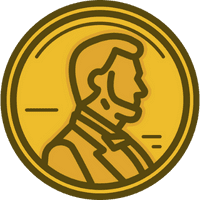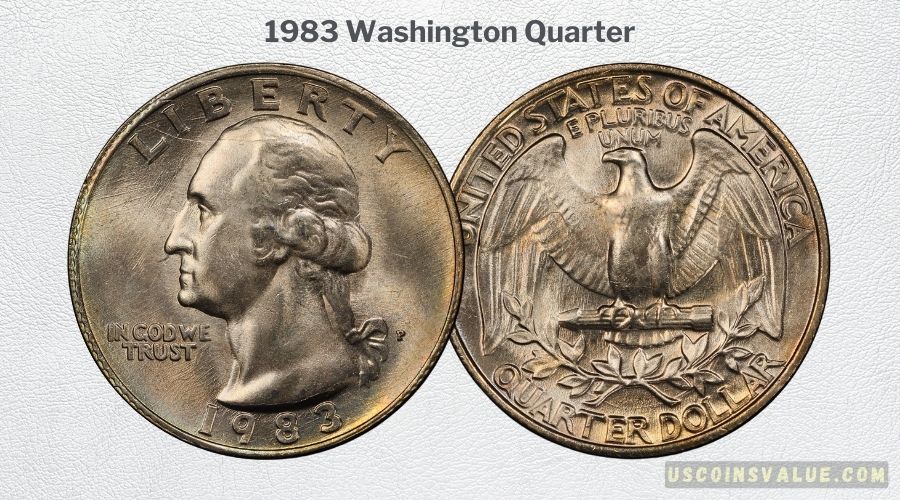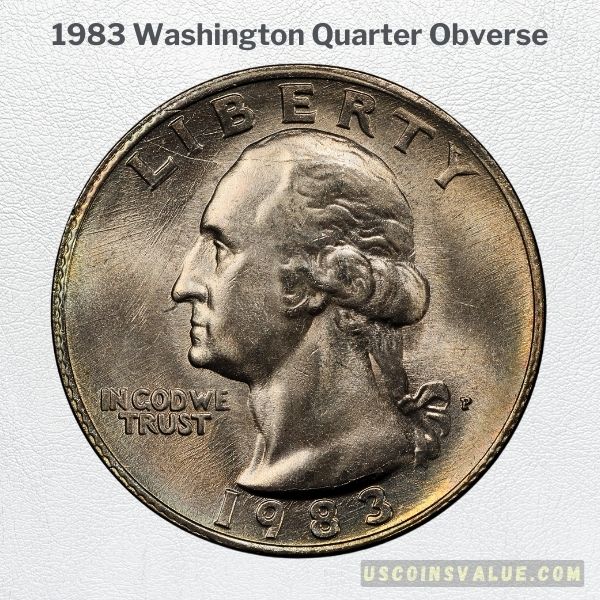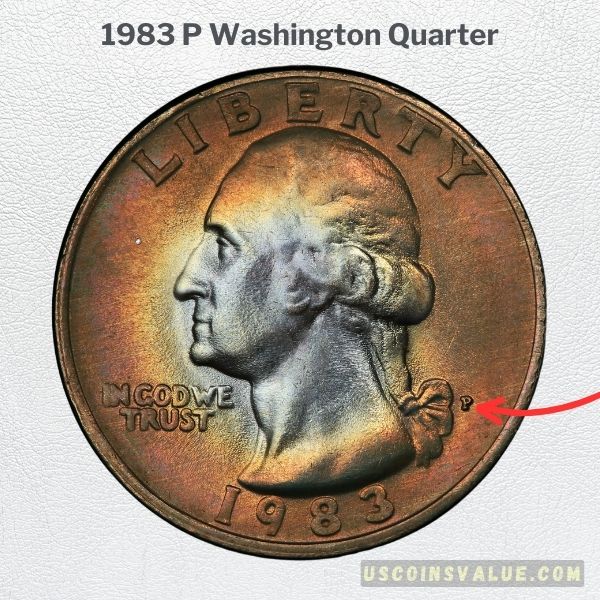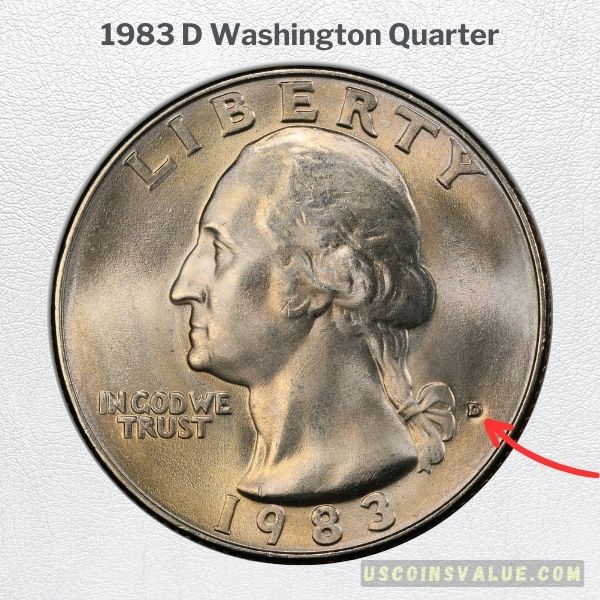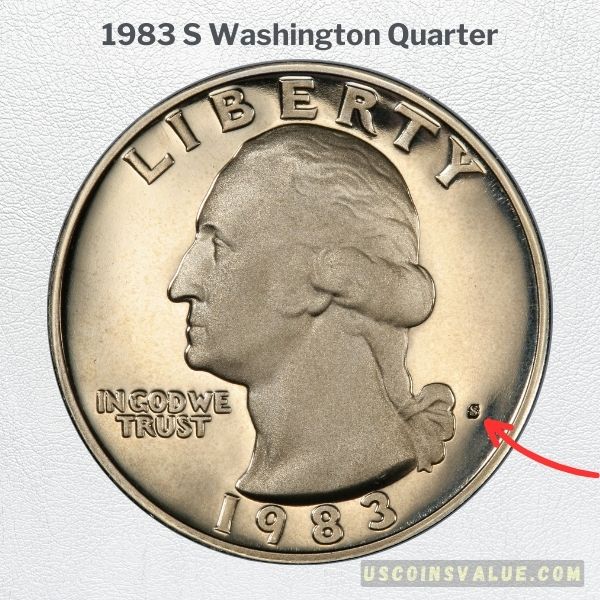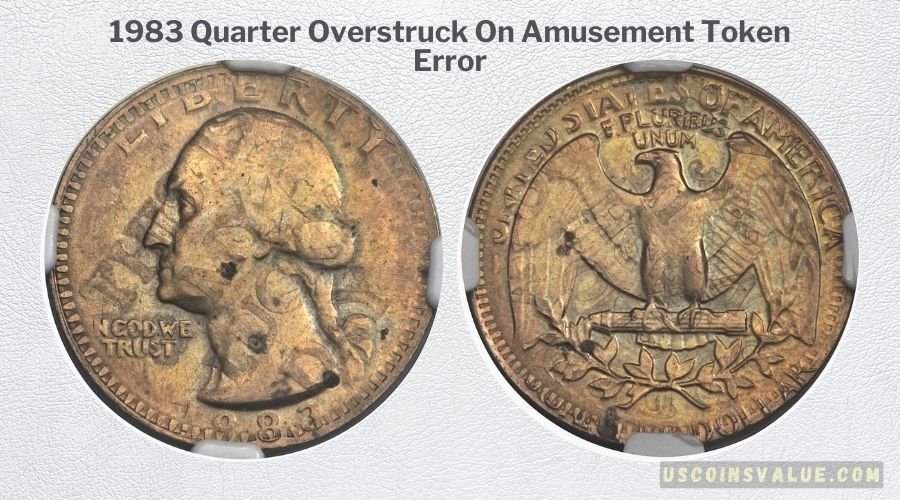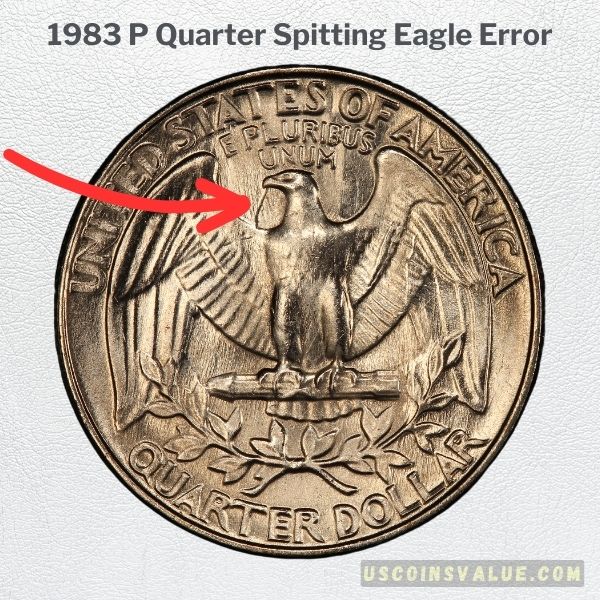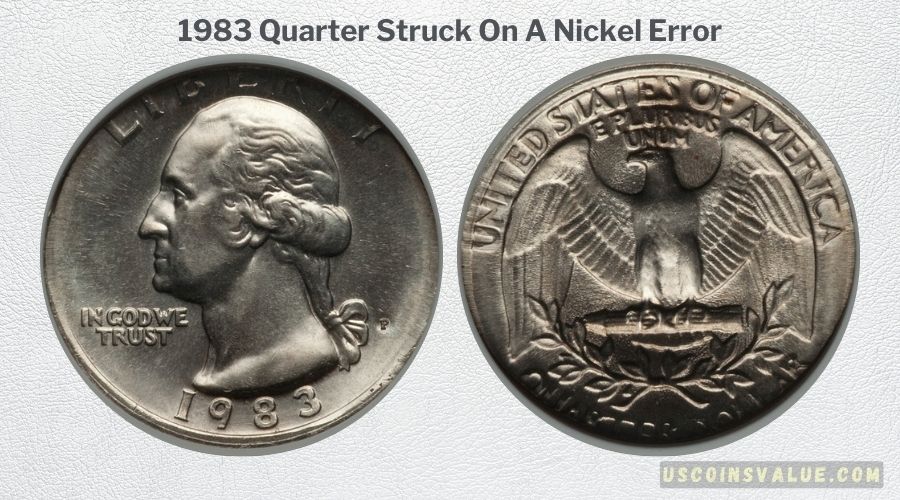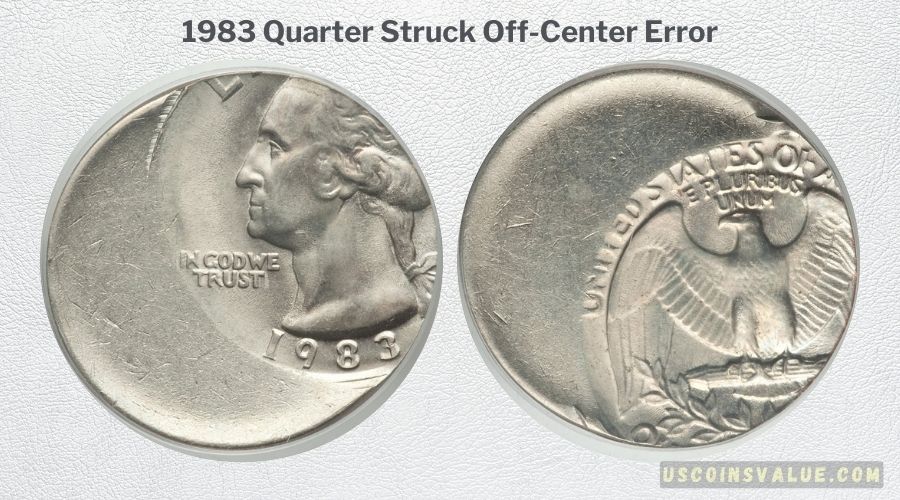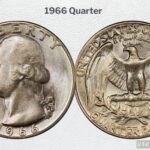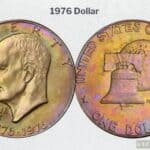Have you recently uncovered a 1983 quarter in your change jar? Or do you want to add this piece to your coin collection?
Either way, the 1983 quarter is a unique coin worth every collector’s attention. Like its counterparts, the coin is a significant part of American history, paying homage to the founding father, George Washington.
Uncirculated 1983 Washington Quarters can trade for around 25 cents to 10 dollars in circulated condition. But if you want to make some good money, opt for uncirculated examples which are worth between $14 to $1,500.
The most recent sales show the value of a 1983 quarter graded at MS 66 and above can range from $53 to $504+.
What’s The Story Behind The 1983 Quarter?
The 1983 Washington quarter belongs to the 1965-1998 series. These coins were made from a copper-nickel alloy as opposed to their predecessors, which were pure silver.
But what makes these quarters so special?
In the early 1980s, the U.S. economy was still struggling due to the massive recession, which was the lingering aftermath of the stagflation of the 1970s. At that time, President Ronald Reagan, who had just come into power, had vowed to slash federal budgets to help reduce the ever-increasing national deficit.
As a result, the production of the U.S. Mint coin set, a popular collectors’ item established in 1947, was halted. Hence, there were no official U.S. Mint uncirculated sets in 1982 or 1983. These were also among the worst years for the U.S. economy since the Great Depression.
The only U.S. Mint sets available at the time that contained uncirculated coinage were the souvenir sets. These souvenir sets contained coins from their respective mint facility and were sold only at the gift shop of the mint that produced them.
This situation led to a scarcity of 1983 Washington quarters in uncirculated grades. Even in higher circulated grades, these quarters will fetch quite a hefty price.
| Mint | Mint Mark | Mintage |
| Philadelphia | P | 673,535,000 |
| San Francisco | S | 3,279,126 |
| Denver | D | 617,806,446 |
| Total | 1,294,620,572 |
Features and Design of the 1983 Quarter
Obverse Design
The obverse design of the 1983 Washington Quarter was the work of renowned sculptor John Flanagan. It featured the bust of George Washington facing left.
Above his head, right along the top rim of the coin, is the word “LIBERTY”. While underneath his chin, we have the words “IN GOD WE TRUST”.
Along the bottom rim, right at the point where George Washington’s neck cuts off, the year 1983 is engraved, i.e., the year the coin was minted.
Reverse Design
The reverse design of this quarter was also the work of John Flanagan. Its most notable feature is the eagle with outstretched wings. This image is at the center of the design, spanning most of the coin’s reverse.
The eagle is perched on a bundle of arrows with the tips facing right. Beneath the bundle is a wreath made of olive branches.
Along the top rim of the coin, we have the phrase “UNITED STATES OF AMERICA”. Just below it and right above the eagle’s head, we have the words “E PLURIBIS UNUM”.
At the bottom, the legend “QUARTER DOLLAR” sits along the rim of the coin, representing the denomination.
Additional Features of The 1983 Quarter
- Category: Washington Quarters
- Type: Type 2, Clad (1965–1998)
- Mint: Philadelphia, Denver, San Fransisco
- Mintage: 1,294,620,572
- Obverse/Reverse Design: John Flanagan
- Composition: 75% copper, 25% Nickel
- Weight: 5.67g
- Diameter: 24.3mm
- Edge: Reeded
- Face Value: $0.25 (25 cents)
How Much Is The 1983 Quarter Worth?
Before we delve much deeper into the specifics of the 1983 quarters, let’s first look at how they’re valued according to their mint mark, condition, and circulation state.
| 1983 Quarter Value Chart | |||||
| Mint Mark/ Condition | XF45 | MS63 | MS65 | MS67 | |
| 1983 “P” Washington Quater | $0.25 – $0.50 | $14 | $46 | $600 | |
| 1983 “D” Washington Quarter | $0.25–$0.50 | $10 | $38 | $1250 | |
| PR64 | PR67 | PR69 | PR70 | ||
| 1983 “S” Proof DCAM Washington Quater | $5 | $6 | $16 | $46 | |
1983 Quarter Varieties and Values
1. 1983-P Washington Quarter
Did you know that the Philadelphia Mint did not use a mint mark until 1980? For the longest time, the Philadelphia Mint was solely responsible for minting all coins that went into circulation. Thus, the need for a mint mark didn’t make much sense.
Even after the Denver and San Francisco mints started operating, Philadelphia still maintained its ‘no mint mark’ status. The first coins to bear the ‘P’ were nickels minted from 1942 to 1945.
The mint didn’t use the mint mark again until they struck silver dollar coins in 1979. So, from 1980, all the coins minted at Philadelphia bore the mint mark.
Being among the first in the series to bear the ‘P’ mint mark, the 1983 Washington quarter has become a highly sought-after coin among collectors.
In 1983, the Philadelphia Mint produced over 670 million of these quarters. The mint mark was on the obverse side, behind Washington’s neck, below the hair ribbon.
Due to their high production, the 1983-P quarter isn’t as rare, and some are still in circulation to date. As such, their current value ranges from $0.25 to $10 for coins in good condition. These specimens often exhibit scratches and damage marks on their surface.
Uncirculated pieces, on the other hand, maintain their original mint luster and boost smooth, sharp detail. Nevertheless, they are not free from a few light scuffs and contact marks. In auction houses, these coins could sell anywhere from $14 up to $999 or more.
Some of the highest-valued 1983-P quarters sold more recently include:
| Grade | Price | Auction Firm | Date |
| MS67 | $504 | Stack’s Bowers | Apr-2023 |
| MS66 | $66 | Heritage Auctions | Feb-2023 |
| MS66+ | $225 | David Lawrence RC | Dec-2022 |
| MS67 | $456 | Heritage Auctions | Feb-2022 |
2. 1983-D Washington Quarter
In 1983, the Denver Mint produced almost as many quarters as the Philadelphia Mint. Since most entered circulation, the 1983-D quarters aren’t rare, and you can find them in your pocket change.
Coins minted from the Denver mint had a ‘D’ mint mark on the obverse side, behind George Washington’s neck, right below the hair ribbon.
In terms of value, most collectors and dealers pay attention to the signs of wear, luster, and surface marks on the coin. For example, a well-worn 1983-D quarter with smoothed design details would likely be graded as Good or Very Good condition. As such, these quarters can be worth 25 cents to 3 dollars.
However, uncirculated specimens in grades MS60 through MS65 retain their original mint luster and feature a few contact marks. They often trade in for more than $10.
Super gem quality 1983- quarters graded at MS65 up to M70 are scarce and highly desirable for their pristine look. Such pieces can bring in as much as $1,058.
The table below shows the most recent sale records of the 1983 silver dollars:
| Grade | Price | Auction Firm | Date |
| MS67 | $504 | Stack’s Bowers | Apr-2023 |
| MS67 | $900 | Heritage Auctions | Oct-2020 |
| MS67 | $1140 | Heritage Auctions | Jun-2019 |
| MS67 | $1320 | Heritage Auctions | Feb-2018 |
3. 1983-S Washington Quarter
In 1983, the San Francisco mint produced around 3 million Washington quarters, and they were all proof coins. Proof coins are designed for collectors and enthusiasts, not circulation. As such, they’re specially struck with high-quality dies and planchets.
All the quarters struck in San Francisco that year were designated “deep cameos” for their high quality. If you’re new to the coin collection, there are two different varieties of contrast in proof coins; cameo and deep cameo contrast.
What makes CAM and DCAM coins stand out from regular coins is their deeply polished and highly reflective surface. Furthermore, CAM-proof coins usually have a mirror-like luster. Thus, the coin design details appear milky white.
On the other hand, DCAM-proof quarters display deep frosting on both sides and predominantly appear black and white.
Due to the high quality and low mintage volume, you would think the 1983-S silver dollars would be worth more than their cousins from Philadelphia and Denver.
Surprisingly, that’s not the case. Since they were designed for a specific audience, these proof coins are abundant and readily available up to PR69. In PR70, DCAM specimens become rare, but still, enough examples exist to make them affordable.
Based on record sales, 1983-S proof coins cost between $5 to $80 in auction houses. Check the table below for more price information.
| Grade | Price | Auction Firm | Date |
| PR 70 | $78 | Heritage Auctions | May-2013 |
| PR70 DCAM | $41 | David Lawrence RC | May-2020 |
| PR70 | $55 | Great Collections | Apr-2013 |
| PR70 | $44 | Great Collections | Oct-2012 |
1983 Washington Quarter Errors
If you’re ever surfing the coin market, don’t be surprised if you run into a few oddly shaped or designed coins. If you luck out and find one, you should snatch it up, since these oddities make such coins quite valuable.
The 1983 Washington quarters are not exempt from such errors. They contain quite a number as compared to other coins.
1. 1983 Quarter Overstruck on An Amusement Token
The 1983 silver dollar overstruck on an amusement token is a one-of-a-kind error coin. It’s the only one of its kind that exists, which makes it incredibly rare.
On top of this novelty, the details of the original token still stand out on the coin’s surface. It features the words “THIS IS MY LUCKY DAY”, engraved diagonally across the obverse side and surrounded by lucky clovers.
This coin sold for a whopping $15,822 at Heritage Auctions in January 2014.
2. 1983-P Quarter Spitting Eagle Error
The 1983 Spitting Eagle quarter error is probably the most popular Washington quarter variety. As a fact, many grading agencies recognize these error coins as a variety of the 1983 quarter. Because of this, it fetches a slightly higher price than regular strikes.
Sometimes, the obverse and reverse dies can clash together without a planchet in between them. Because of the tremendous pressure used, a part of the design engraved on the die may be damaged.
When the mint uses these dies to strike a quarter, the coin will feature a raised region or a die gouge. The same error occurs when a foreign object is dragged across or digs into the coin’s surface.
For the 1983-p quarter with spitting eagle error, a vertical gouge runs from the eagle’s beak down to its feather on the reverse side. This error is exclusive of the 1983 silver dollar minted from the Philadelphia Mint.
As for their value, a single error coin with a spitting eagle graded at MS63 and above can sell for as much as $195.
3. 1983 Quarter Struck on A Nickel Error
Such an error is quite unusual. It occurs when the mint strikes a 1983 quarter design on a blank planchet made for nickel.
Unlike regular 1983 coins, these pieces are far lighter and smaller in size. Some examples even lack design elements found in regular quarters.
While we couldn’t find sale records for this quarter, we did find a 1983-P silver dollar struck on 5 cents planchet that sold for $258.50 in 2016 at heritage auctions. However, always be on the lookout for this error coin.
4. 1983 Quarter Struck Off-Center Error
Another dramatic error worth highlighting is the 1983 quarter struck off-center. This error happens when the blank planchet is misaligned when the die strikes. As such, the design of the coin radically shifts to one side.
Generally, the value of the coins depends on the degree or percentage of the off-center. The more off-center the design of the coin, the higher the value. Of course, these apply to specimens that retain most of their design details.
At times, the planchet is struck off-center. This moves the design towards one side of the coin, and the whole coin design doesn’t fit. One great example is the 1983-P silver quarter struck 40% off center that sold for $188.
Additional 1983 Quarter Errors
- 1983 Quarter Reverse Indent Error: A full indent occurs when one planchet is struck on top of the other, resulting in a coin made of two coins stuck together. This can occur on the obverse side or the reverse. Logically, if it’s the reverse side that was struck, the error becomes a reverse indent error. This is a very valuable error in coins, more so if it occurs alongside another error.
- 1983 Quarter finned rim error: The finned rim error occurs when excessive striking pressure is used on one side of the coin or the entire coin. This results in excess metal escaping to the gaps between the collar and die neck, thus forming a flange around the rim of the coin. A finned rim error can occur on one or both sides of the quarter. This error adds value to a coin, especially when combined with another error.
Closing Thoughts
That’s all for the 1983 Washington Quarter! But before we go, let’s refresh our minds on what we’ve learned.
The 1983 quarter is a unique piece that embodies American history and culture. More than 1 billion pieces of these 1983 series entered circulation and many survive to date.
Most specimens—especially circulated examples–show signs of significant wear and tear, thanks to the many years of exchanging hands. As a result, these coins often fetch as much as their face value of $0.25 in the open market.
But if you find an uncirculated piece, expect as much as $14 for quarters graded at MS60. However, those that can achieve a higher grade could fetch as much as $500 in auctions.
With that said, we bid you farewell. If you have any questions or concerns, keep us updated by leaving us a comment below.
